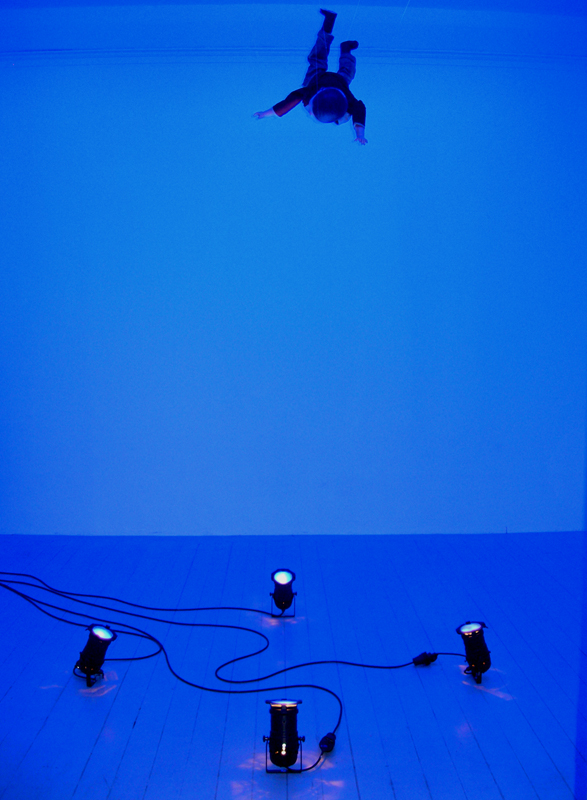
"Eros and Thantos Flying/Falling"
Ken Feingold 2006
ventriloquist puppets, realtime digital speech
So you make me so crazy
Once I said so
You just are so hard to know so
I should not want to have to have you
So I could have to have you so
I need you so
You need me to want to have you
So I could always have you when I want you so
When I want to kill you, you want me so
You make me so crazy
The dialog is not recorded but generated in real-time by a computer running a program written by Feingold that examines the text just spoken and according to algorithms draws upon databases of words and syntaxes to create the lyrics. The song of the puppets is in this way neither scripted nor fully random in the same time is it constantly changing. Even if the puppets follows each other there is a dysfunction in the communication which interests Feingold and in his pieces he returns to situations where the communication fails, when words lose their meaning and where the parts go from an engaged conversation to set themselves on “automatic”.
For Mejan Labs Ken Feingold will premiere a new work in his Eros and Thanatos series, titled Eros and Thanatos Falling/Flying. Here he suspends two ventriloquist puppets, one in each room of Mejan Labs, from the ceiling so they appear to fly or fall. This ambivalence, a balance between two opposites, is something you can find in several of Feingold's pieces. The mythical characters of Eros and Thanatos were used by Freud in his formulation of drive theory to metaphorically represent the fundamental biological energies of, on the one hand, Eros: life, creativity, growth, and increase in tension, and on the other, Thanatos: that of the movement towards homeostasis (elimination of all tensions), dissolution, negation, and death. Psychoanalysts who follow Freud’s ideas have characterized these in many different ways, but fundamentally agree that we are constantly driven between stimulation and action by a balance of the forces of these energies, neither one ever found in completely pure state.
Ken Feingold | artworks | catalog | reference texts | contacts
copyright © 1998-2011 all rights reserved